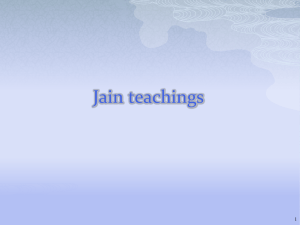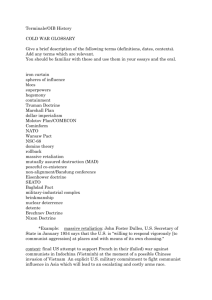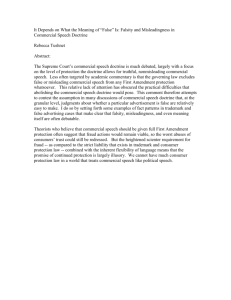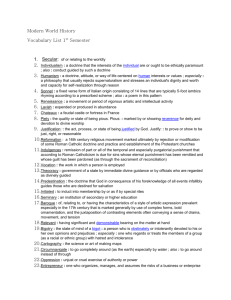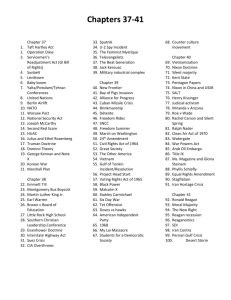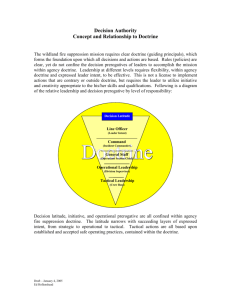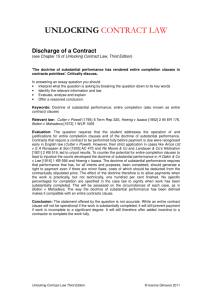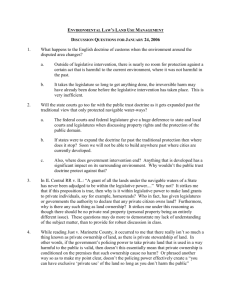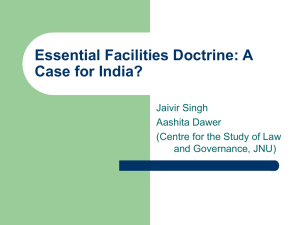The Axial Age in India, pp
advertisement
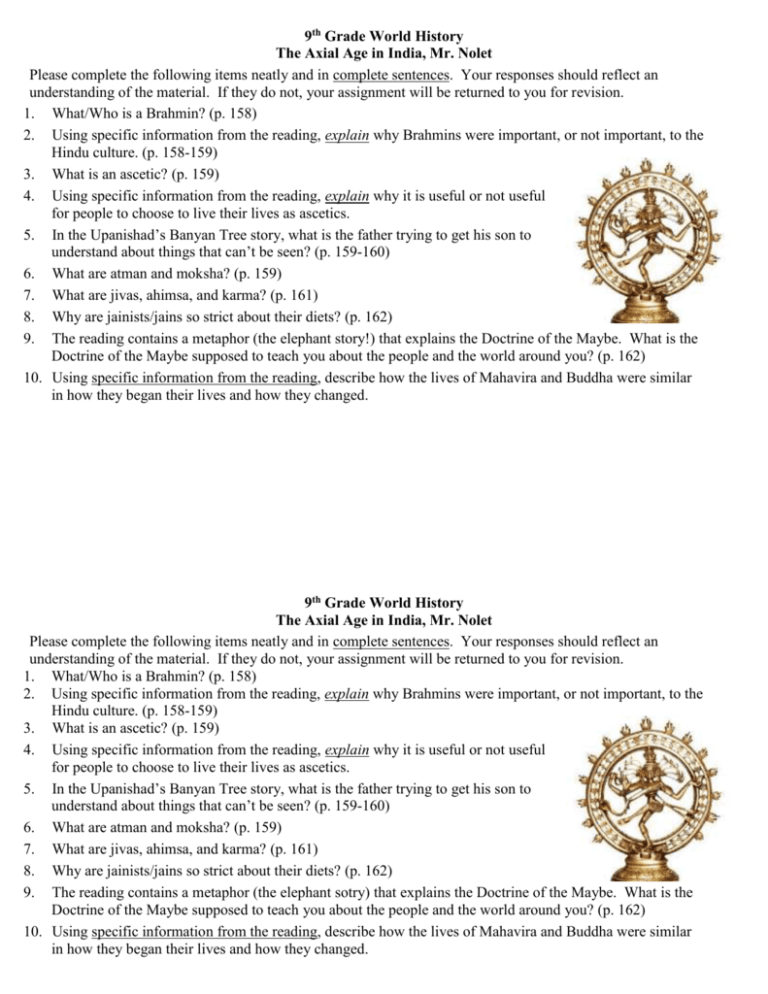
9th Grade World History The Axial Age in India, Mr. Nolet Please complete the following items neatly and in complete sentences. Your responses should reflect an understanding of the material. If they do not, your assignment will be returned to you for revision. 1. What/Who is a Brahmin? (p. 158) 2. Using specific information from the reading, explain why Brahmins were important, or not important, to the Hindu culture. (p. 158-159) 3. What is an ascetic? (p. 159) 4. Using specific information from the reading, explain why it is useful or not useful for people to choose to live their lives as ascetics. 5. In the Upanishad’s Banyan Tree story, what is the father trying to get his son to understand about things that can’t be seen? (p. 159-160) 6. What are atman and moksha? (p. 159) 7. What are jivas, ahimsa, and karma? (p. 161) 8. Why are jainists/jains so strict about their diets? (p. 162) 9. The reading contains a metaphor (the elephant story!) that explains the Doctrine of the Maybe. What is the Doctrine of the Maybe supposed to teach you about the people and the world around you? (p. 162) 10. Using specific information from the reading, describe how the lives of Mahavira and Buddha were similar in how they began their lives and how they changed. 9th Grade World History The Axial Age in India, Mr. Nolet Please complete the following items neatly and in complete sentences. Your responses should reflect an understanding of the material. If they do not, your assignment will be returned to you for revision. 1. What/Who is a Brahmin? (p. 158) 2. Using specific information from the reading, explain why Brahmins were important, or not important, to the Hindu culture. (p. 158-159) 3. What is an ascetic? (p. 159) 4. Using specific information from the reading, explain why it is useful or not useful for people to choose to live their lives as ascetics. 5. In the Upanishad’s Banyan Tree story, what is the father trying to get his son to understand about things that can’t be seen? (p. 159-160) 6. What are atman and moksha? (p. 159) 7. What are jivas, ahimsa, and karma? (p. 161) 8. Why are jainists/jains so strict about their diets? (p. 162) 9. The reading contains a metaphor (the elephant sotry) that explains the Doctrine of the Maybe. What is the Doctrine of the Maybe supposed to teach you about the people and the world around you? (p. 162) 10. Using specific information from the reading, describe how the lives of Mahavira and Buddha were similar in how they began their lives and how they changed.
